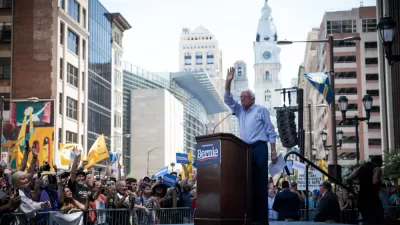If natural gas has a future, the key is to regulate hydraulic fracking in a report by the International Energy Agency. The New York Times recommends that all concerned about the environment read it - and no better place to apply it than New York.
In no uncertain terms, the Paris-based International Energy Agency which reports on all forms of energy, states "that shale gas can be safely extracted, and at relatively low cost, and is preferable to coal in terms of emissions that contribute to global warming."
However, the report makes clear that there are serious environmental and social risks associated with fracking, including "imposing a larger environmental footprint than conventional gas development....Serious hazards, including the potential for air pollution and for contamination of surface and groundwater, must be successfully addressed. Greenhouse-gas emissions must be minimised."
To address these serious impacts, IEA has written the 'Golden Rules' - "principles that can allow policymakers, regulators, operators and others to address these environmental and social impacts."
Perhaps with those rules in mind, particularly the "watch where you drill" rule (pg. 44), New York State Gov. Andrew Cuomo has introduced a plan that "would limit drilling to the deepest areas of the Marcellus Shale rock formation, at least for the next several years, in an effort to reduce the risk of groundwater contamination", writes Danny Hakim on June 13 in The New York Times.
Hakim notes that, "the strategy has not been made final and details could change, but it has been taking shape over several months. It would be contingent on hydraulic fracturing's receiving final approval from state regulators, a step that is not a foregone conclusion but is widely expected later this summer."
FULL STORY: EDITORIAL Natural Gas, by the Book

Planetizen Federal Action Tracker
A weekly monitor of how Trump’s orders and actions are impacting planners and planning in America.

Chicago’s Ghost Rails
Just beneath the surface of the modern city lie the remnants of its expansive early 20th-century streetcar system.

San Antonio and Austin are Fusing Into one Massive Megaregion
The region spanning the two central Texas cities is growing fast, posing challenges for local infrastructure and water supplies.

Since Zion's Shuttles Went Electric “The Smog is Gone”
Visitors to Zion National Park can enjoy the canyon via the nation’s first fully electric park shuttle system.

Trump Distributing DOT Safety Funds at 1/10 Rate of Biden
Funds for Safe Streets and other transportation safety and equity programs are being held up by administrative reviews and conflicts with the Trump administration’s priorities.

German Cities Subsidize Taxis for Women Amid Wave of Violence
Free or low-cost taxi rides can help women navigate cities more safely, but critics say the programs don't address the root causes of violence against women.
Urban Design for Planners 1: Software Tools
This six-course series explores essential urban design concepts using open source software and equips planners with the tools they need to participate fully in the urban design process.
Planning for Universal Design
Learn the tools for implementing Universal Design in planning regulations.
planning NEXT
Appalachian Highlands Housing Partners
Mpact (founded as Rail~Volution)
City of Camden Redevelopment Agency
City of Astoria
City of Portland
City of Laramie



























